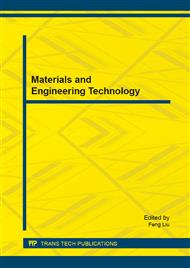p.1038
p.1043
p.1049
p.1056
p.1063
p.1068
p.1074
p.1082
p.1089
An Algorithm for Red Tides Species’ Identification Based on Spectral Characteristics and Wavelet Analysis
Abstract:
Hyperspectral remote sensing technology provides a new way to identify red tides types, but many existing methods can’t take full advantage of the spectral reflectance characteristics and often yield false recognitions. So, on the premise of perfect spectral curves library of red tides to be referred, this paper proposes an algorithm based on spectral reflectance characteristics and wavelet decomposition for red tides recognition. The algorithm identify the red tide species by applying wavelet analysis to a certain wavelength range limited by the spectral features. To compare and prove the effect of this algorithm, do simulate experiments with both the proposed method and the traditional SAM method. The results show that, compared with SAM method, the algorithm put forward in this paper can better indentify the species of red tides.
Info:
Periodical:
Pages:
1063-1067
Citation:
Online since:
January 2015
Authors:
Price:
Сopyright:
© 2015 Trans Tech Publications Ltd. All Rights Reserved
Share:
Citation:


